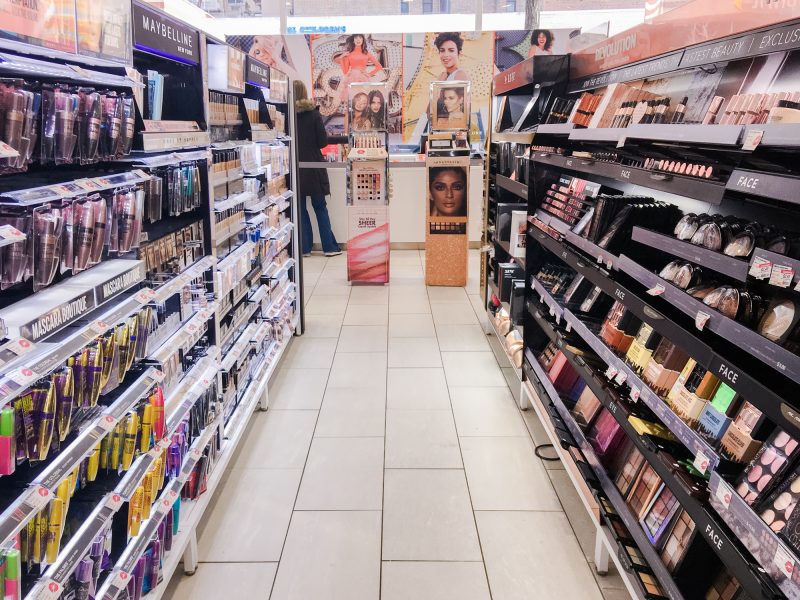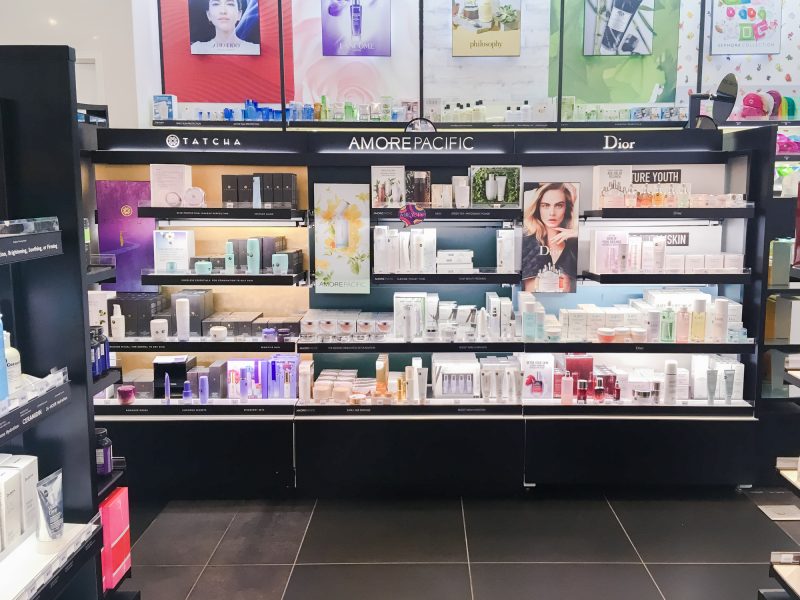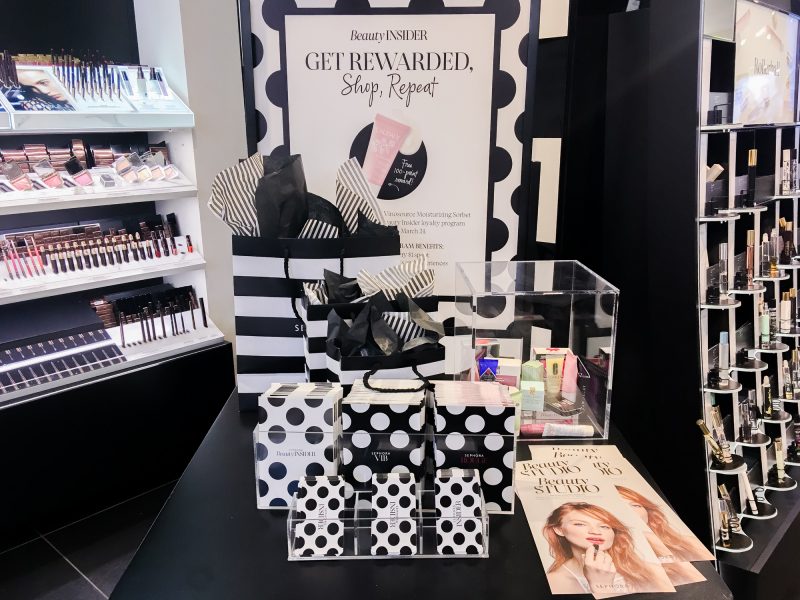- Ulta Beauty is opening new stores while many other retailers are closing them.
- One reason for Ulta’s success is that it carries both luxury and drugstore brands, allowing it to appeal to shoppers on a variety of budgets.
- Rival beauty store Sephora, on the other hand, focuses on stocking luxury brands.
- We went to an Ulta and a Sephora to see how the two stores stacked up against each other.
While many other retailers close their doors, Ulta Beauty reportedly plans to open at least 100 new stores in 2018.
According to CNBC, the beauty retailer is entering new markets, adding stores in existing markets, and remodeling old stores to stay relevant. Ulta carries upwards of 500 brands, ranging in price from $3 to more than $100, which is nearly double what luxury beauty rival Sephora carries.
Since its stores offer a full suite of beauty services, Ulta competes not only with other beauty retailers, but with drugstores and salons as well. Recently, a report by research firm Piper Jaffray revealed that Ulta has become the top beauty destination for average-income teens, overtaking Sephora for the first time in a year.
Another reason Ulta is seeing success is that 90% of its locations are in suburban strip malls instead of enclosed shopping malls, meaning that it isn’t heavily affected by the ongoing decrease in shopping mall foot traffic.
Sephora has more locations in shopping malls than Ulta, though it's taking action to move out of malls and open smaller locations, called Sephora Studios, to supplement decreasing mall traffic. It's also bringing in more exclusive product releases and running programs such as Sephora Accelerate, a beauty startup accelerator.
To see how Ulta and Sephora stacked up against each other, we visited both stores back to back. This is what we found:
My first stop was Ulta. The only Manhattan location is on the Upper East Side, right next-door to a Sephora.

The inside was bright, and the employees were all very bubbly. A Benefit Cosmetics promotion was advertised in the entryway, with high-end cosmetics to the left and drugstore brands on the right.

Ulta had a few good deals to offer right away, including a bin that offered five products for $10 in the front of the store.

I started making my way through the more affordable side of the store. It had a huge display of the popular brand NYX cosmetics, which is generally available in drugstores and online.

There were rows of products ranging from budget drugstore brands like Maybelline ...

... to affordable, independent brands like Revolution Beauty.

It even had a display from ColourPop, a Los Angeles-based cosmetics brand that was previously only available online.

There was also a selection of Ulta-branded products being promoted as "buy one, get one 50% off." Most products were under $25.

Ulta had a pretty large selection of bath products, body scrubs, and face masks.

Typical drugstore products like razors, deodorant, and makeup-remover wipes were carried in-store, too.

Across the center aisle of the store were the higher-end products, including a range of perfumes by brands like Chanel and Gucci.

There was a large MAC cosmetics display, directly across from the NYX display.

It also had a lot of products from popular high-end makeup brands like Urban Decay ...

... Too Faced ...

... and Benefit, including a full-service Benefit Brow Bar. These higher-end cosmetics were generally priced anywhere from $25 to $200, compared to the lower-end brands that were generally under $20. There was something for everyone at Ulta.

It even had a clearance section. It was haphazard, but its items were marked down by as much as 70%.

There was a huge variety of skincare for all budgets, as well as stations set up to try products out.

Hair care products took up about a quarter of the store, ranging from niche, high-end brands to drugstore brands ...

... and the store carried all types of styling products.

Like makeup, there were styling products for every budget, including a nearly $200 curling iron from drybar.

In addition to all of the styling products, Ulta also had a range of different hair color kits.

There was even a full-service salon in the back of the store, which does hair, nails, makeup, brow services, and skincare.

After Ulta, I visited its neighbor and one of its biggest competitors, Sephora.

There was a similar Benefit Cosmetics display at the front of the store. The store was generally quieter than Ulta was.

Instead of the extremely bright interior seen at Ulta, the walls and floors were black and white, with the exception of the branded displays.

The store was organized by brand, similar to Ulta, though there was no budget or low-end section of the store.

Sephora sold quite a few popular prestige brands that Ulta didn't have, such as Fenty Beauty by Rihanna and Kat Von D.

It also had a shimmering gold wall of Pat McGrath Labs products.

The prestige brands that both stores did have, such as Too Faced, had nearly identical displays at each store, and the prices were consistent.

Sephora only carried high-end brands, but there was a wider variety of luxury products than at Ulta.

Most products cost at least $25 and went upwards of $200 for items like perfume.

Many skincare products cost around $100, sometimes for just a few ounces.

The Sephora Collection, the store's private-label brand, was the least expensive brand in the store. It wasn't as inexpensive as many of the products at Ulta, but it was still a more affordable option than many of the luxury brands that were for sale.

The Sephora Collection was more organized than the Ulta Beauty brand, and there was more variety in terms of the products that were carried.

Sephora also had a larger selection of perfume, but hardly anything was priced below $60.

Sephora has a beauty studio with professionals giving makeovers, but it didn't seem as complete as Ulta's.

It also had a skincare station offering mini-facials and samples of products. Samples were one thing Sephora held over Ulta — helpful if you aren't sure you're ready to drop money on an expensive product.

The skincare selection was huge, but everything seemed expensive.

Some things cost upwards of $40 for a bottle that was less than three ounces.

Ulta definitely wins when it comes to hair care. Sephora had a much smaller selection of products — these were the only styling products I was able to find.

There was only one wall of hair products compared to a whole section of the store at Ulta.

Sephora advertised its rewards program more than Ulta did. Both stores reward shoppers with one point for every dollar spent. At Sephora, once customers reach 100 points, they can redeem a reward like travel-size makeup or skincare products. The more points you have, the more exciting the rewards are. At Ulta, points can be used as store credit towards purchases instead of for specific items.

Read more about the rewards programs at Sephora and Ulta »
Ulta appeals to more shoppers than Sephora by carrying non-luxury brands in its stores. While Sephora is more focused on the high end, Ulta sells luxury, drugstore, and intermediately priced makeup and hair and skin care. It offers sales and discounts, which we didn't see at Sephora. Overall, I found Ulta had more to offer than Sephora, especially for those on a budget.


